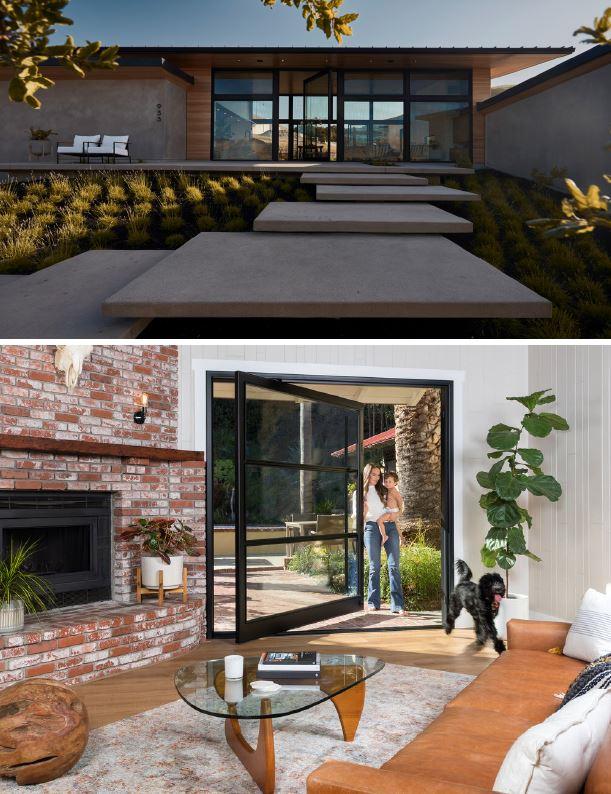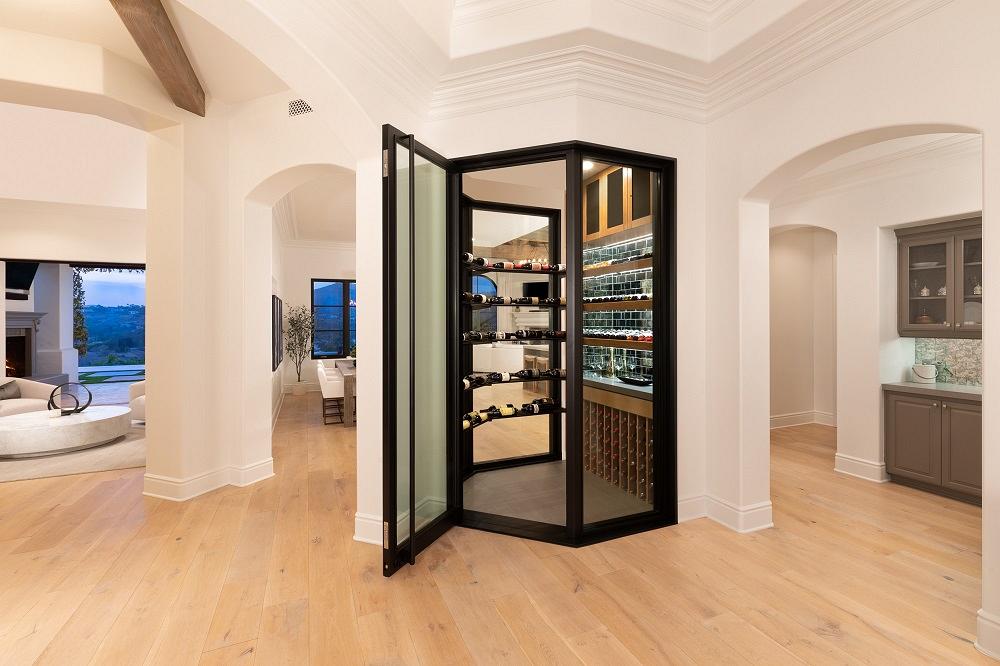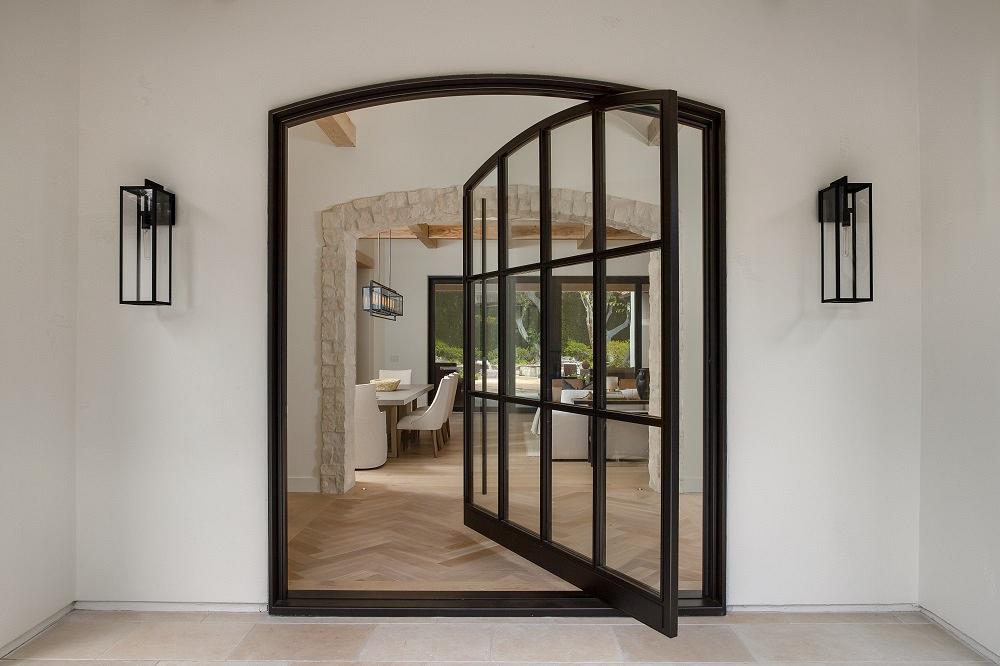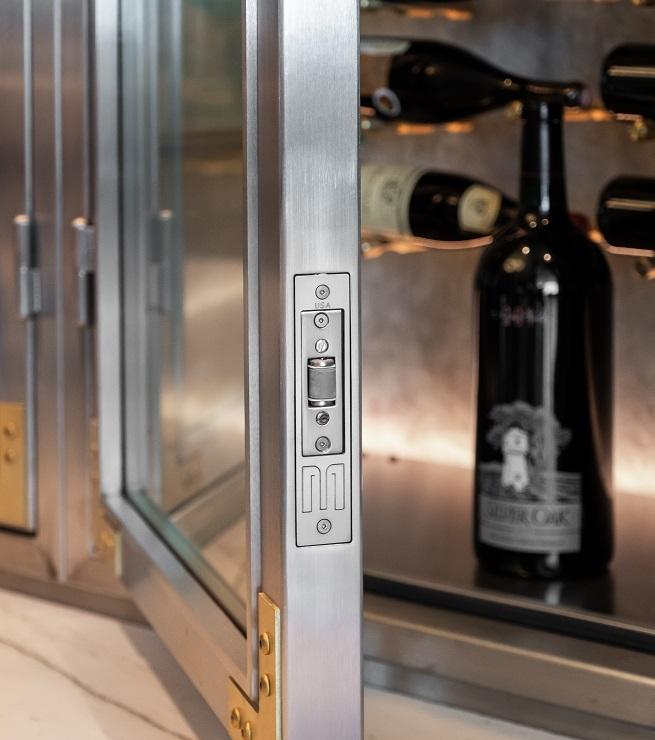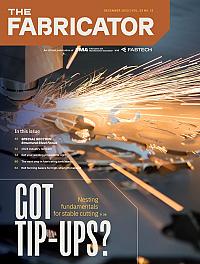Editor-in-Chief
- FMA
- The Fabricator
- FABTECH
- Canadian Metalworking
Categories
- Additive Manufacturing
- Aluminum Welding
- Arc Welding
- Assembly and Joining
- Automation and Robotics
- Bending and Forming
- Consumables
- Cutting and Weld Prep
- Electric Vehicles
- En Español
- Finishing
- Hydroforming
- Laser Cutting
- Laser Welding
- Machining
- Manufacturing Software
- Materials Handling
- Metals/Materials
- Oxyfuel Cutting
- Plasma Cutting
- Power Tools
- Punching and Other Holemaking
- Roll Forming
- Safety
- Sawing
- Shearing
- Shop Management
- Testing and Measuring
- Tube and Pipe Fabrication
- Tube and Pipe Production
- Waterjet Cutting
Industry Directory
Webcasts
Podcasts
FAB 40
Advertise
Subscribe
Account Login
Search
Welder finds success with door fabrication business
Todd Noe started fabricating heavy-duty residential doors, launched Maiden Steel in San Diego area
- By Dan Davis
- December 20, 2023
- Article
- Arc Welding
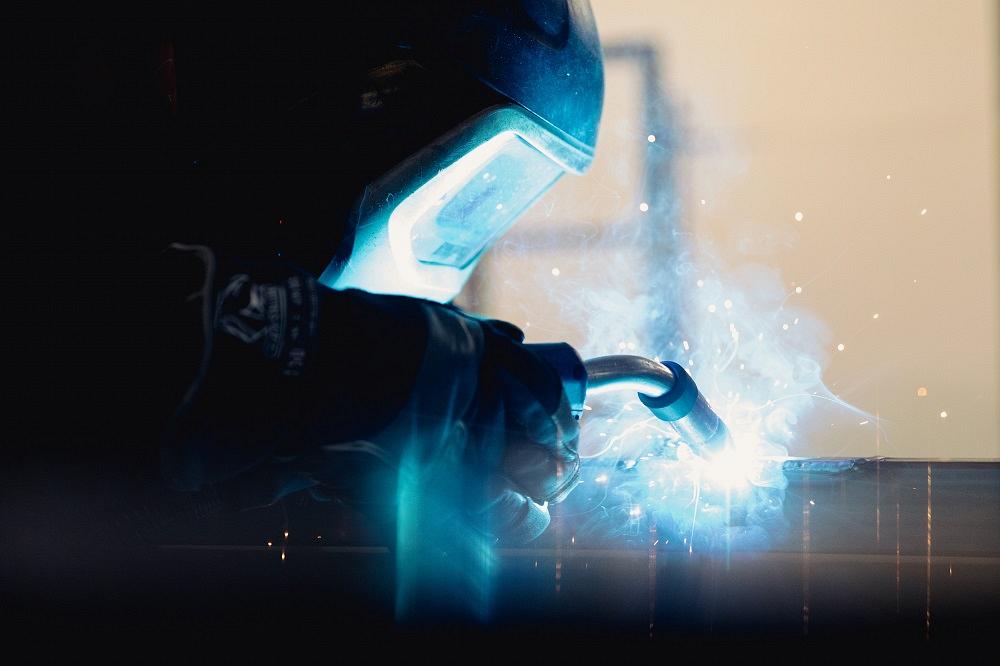
Todd Noe fell in love with welding in high school and has used those skills to propel his entrepreneurial life forward.
How much wood would a welder weld if the welder could weld wood?
Todd Noe wasn’t really interested in finding out while a student at San Dieguito High School in Encinitas, Calif. He didn’t like waiting around to move on to the next step.
“I didn’t have the patience for wood—to let the thing sit up with some wood glue and some clamps for a few hours before I could touch it,” Noe said. “I liked the immediate gratification that came from welding. Lay some beads and that thing is stronger than it was to begin with.”
His shop teacher Roger Taylor introduced him to welding, and it was love at first arc strike. He estimated that he spent 13 out of 16 quarters of his high school career in welding classes, culminating with him becoming a sort of student foreman in the classroom.
“I still go back to this day. They bring me in. I meet folks. I talk about the curriculum that’s coming up for the school year,” Noe said. “It really was life-changing for me.”
In the ensuing years, Noe sharpened his welding skills, launched his own business, and later found a manufacturing niche that brought the balance of creative work and economic success that enabled the company to grow profitably. Welding helped to open this door to success at Maiden Steel, a designer, manufacturer, and finisher of doors that are installed all over North America.
From High School to School of Hard Knocks
Noe almost didn’t follow in the footsteps of his brother, who also had enjoyed shop classes as a high schooler. When Noe was about to enter high school, his community had just opened up a new high school that focused on college preparation for its students. In other words, the new high school didn’t have vocational education programs. That was going to stay at San Dieguito High School, now known as San Dieguito Academy.
“This bright new shiny school opened up down the road that all my friends were going to,” Noe recalled. “My mom said, ‘No. You’re going to the old school.’ I put up a fight, but then I get there. It was the best decision she’s ever made for me.”
A self-described “hard worker,” Noe would leave school just after lunchtime and take a bus to a bike manufacturer about 30 miles outside of Encinitas, a job his older brother helped him get. While there, Noe did a lot of gas tungsten arc welding on aluminum frames and even assisted with the prototypes of titanium frames.
Even though the job doesn’t sound like a typical production welding job, it did have its nose-to-the-grindstone moments. In a typical shift, the owner’s wife would drop off 500 newly finished aluminum parts for welding, only to deliver 500 more after he finished the first batch, Noe said.
While he was making $20 per hour welding, he also worked at a pizza restaurant in the evenings and worked for a catering company on the weekends.
“I was ballin’,” he said, laughing.
After high school, Noe enjoyed the life of a young person living on his own. He lived in the mountains as a ski bum. He went to school and took some business classes. At this time, he had an inkling that he wanted to run his own business, but he wasn’t really sure what that would be.
As he tried to figure out his future, he helped a friend, Jeff King, who was launching a skateboard-related company, Skate Rails. Noe helped to design and fabricate skateboard rails that could be set up anywhere, allowing skaters to bypass public areas with handrails and benches, where they were increasingly not welcomed. Jeff King’s notoriety even led to a cable television show (“Built to Shred”).
While the foray into the skateboarding world was exciting, Noe said he knew he wanted to get back to doing his own thing. Again, his welding skills would open a door.
Around this time, he had picked up his welding torch again and started to create some metal sculptures. He had a couple at a local art gallery, and they caught the eye of a contractor. Interested in what he saw, the contractor asked Noe to tackle some custom architectural work at a home he was building. It was a stainless steel balcony rail and some fencing.
“I knew absolutely nothing about general construction. I was drilling through stucco to mount brackets. I had to figure out what sort of fasteners to use to avoid water issues down the road. It was a big learning curve,” Noe said. “The funny thing, thinking back, is that very first project I did was still one of the more complicated jobs that I’ve done to this day.”
Over the next 10 years, Noe honed his welding skills tackling all sorts of projects. He spent a ton of time welding with flux-cored wire outdoors on fence panels and other architectural elements. He also took a variety of other jobs, such as welding to repair commercial cooking equipment, which not only added money to the bank account but forged his future goals. He knew he didn’t want to spend the rest of his days welding fence panels and decorative balcony rails. He wanted to work on something that he could take pride in and would be treasured by those that wanted to invest in his talent.
In 2001, Noe launched Noe Welding Design, which eventually became Noe Design Co. The business specialized in “high-end interior architectural metalwork,” as Noe described it. Projects ranged from custom furniture to large fireplace walls.
“I was doing all the welding, grinding, finishing, estimating, drawings, correspondence with clients, and ordering of materials. I was a one-man show,” Noe said.
As a small business owner, Noe said that he knew he needed help, but it was risky to add people, which meant additional overhead. Then one day, he was about to send out a quote for a job, and right before he sent it out, he doubled the estimate. Things changed when the recipient of the estimate indicated no problem paying the price for the work.
“Moving forward, that made life so much easier. I didn’t take every single job. I’d be selective,” Noe said. “It just clicked after that. We got very, very good at that point in doing high-end work.”
A New Door Opens
Even with the adjustment in pricing strategy, profits weren’t the overriding concern. Noe said that they were putting much more effort and labor into jobs than competitors were. Whereas other contractors weren’t capping tubes on railings or grinding down weld beads to make joints look flush, Noe Design did.
“I wanted our work to look like it came out of a mold rather than a bunch of pieces welded together,” he said.
By this time, Noe Design had grown to about five employees. Noe said he was proud of the work the company was doing, but it wasn’t the easiest life. Installations in Los Angeles could be especially taxing, given the often long commutes to and from the work sites.
Looking to get away from the grind, Noe said he started thinking about a product that the company could fabricate and send to other areas for installation. It would be an expansion of the business that didn’t necessarily involve opening another location.
“Then all of a sudden, I started getting these demands for these custom high-end door systems—some pivot doors and some doors for wine enclosures,” Noe said. “I did some research in the market and found that there were some offerings out there. But there was really nobody offering anything close to what these people were asking me to do.”
Feeling like he could fill a niche, Noe started designing and engineering a product line of doors. He officially launched Maiden Steel in February 2018.
The plan called for phasing out all custom architectural metalwork completely in 11 months and pivoting completely to door manufacturing. Maiden Steel was able to make that conversion in six months.
Noe said what really put the company on the map was a small write-up in Elle Décor magazine. A picture of a bright red pivot door was featured, along with the price. Not only did readers get to see what one of these pivot doors looked like, but they also got an idea of what it would cost. Needless to say, they weren’t turned off by the expense.
“When that came out, we immediately sold maybe a dozen doors all across the country—New Jersey, New York, and Seattle, to name a few,” he said.
“That was a lot of fun,” Noe continued. “You put in all of this work, and it’s physically and mentally straining. Then you get some wins. It’s what just propels you. That makes the staff excited. It makes people want to be there. They’re part of something that’s fun and successful.”
New Direction, New Challenges
Often, metal fabricators who have to deal with custom work or low-volume, high-mix jobs will wax romantic about the life of a manufacturer with a product line. Certainly, it has to be easier knowing that there is some consistency to designs, manufacturing, and shipping.
That might be the case for those that have lived a while with a product line, but Noe admits that he had a lot to learn with his new business. He was comfortable with the designs and even the manufacturing and finishing of these door systems, but he had never really given a lot of thought to cross-country shipping of these types of products.
These doors were expensive and needed to maintain a high-quality finish throughout the shipping process. That required custom wooden crates and foam to protect all aspects of the door system.
While he has had to catch up on some aspects of his growing business, Noe has had a chance to enjoy the expansion of his company’s metal fabricating capabilities. His 9,000-sq.-ft. shop in San Diego has the latest machining centers to produce robust hardware components that can’t be sourced elsewhere. (Some of the pivot hardware has to be sturdy enough to support 6,000-lb. doors.) Noe added a laser tube cutting machine from XOVR CNC, Murrieta, Calif., in February to produce more exact components for the door systems.
“We don’t want to get down to the end of a project and realize we made a mistake at the beginning, forcing us to rip everything apart and start over,” Noe said. “It’s like when you build a home. If the framing is perfect, the house is perfect. If the framing is all screwed up, it’s going to screw up everything for every other trade on the job. That house is going to cost more to complete, and the quality’s going to be terrible.”
Maiden Steel might be adding a laser cutting machine for sheet metal in the coming months. Noe said that the company also is considering adding a location outside of California and close to potential customers.
Meanwhile, the work keeps him and the staff inspired. There’s just enough customization to the standard product line to keep everyone engaged and the work fresh.
Installation poses one of the toughest challenges for Maiden Steel, according to Noe, because employees have to go on the road for an extended period of time. While he knows that personal service from the staff ensures that installations will go according to plan, rather than relying on a third party to handle the work, Noe said he also knows that he needs to look after the work/life balance of his employees. The work schedule that helped to get Noe Design going and add to Noe’s valuable life experiences isn’t for everyone.
The funny part of this whole effort, Noe said, is that manufacturing is now the easiest part of the job. The staff is skilled. The design tools help to ensure that the craftspeople get the correct manufacturing directions. The fabricating technology ensures the parts come out as required to complete the installation.
“I would prefer to be welding as opposed to sitting at a desk, but I don’t have anybody else to do what I’m doing now,” he said. “I’ve got plenty of welders, installers, designers, and CNC operators.”
He would weld if he could weld, but building a business is stopping him—at least for now.
About the Author

Dan Davis
2135 Point Blvd.
Elgin, IL 60123
815-227-8281
Dan Davis is editor-in-chief of The Fabricator, the industry's most widely circulated metal fabricating magazine, and its sister publications, The Tube & Pipe Journal and The Welder. He has been with the publications since April 2002.
subscribe now

The Fabricator is North America's leading magazine for the metal forming and fabricating industry. The magazine delivers the news, technical articles, and case histories that enable fabricators to do their jobs more efficiently. The Fabricator has served the industry since 1970.
start your free subscription- Stay connected from anywhere

Easily access valuable industry resources now with full access to the digital edition of The Fabricator.

Easily access valuable industry resources now with full access to the digital edition of The Welder.

Easily access valuable industry resources now with full access to the digital edition of The Tube and Pipe Journal.
- Podcasting
- Podcast:
- The Fabricator Podcast
- Published:
- 04/16/2024
- Running Time:
- 63:29
In this episode of The Fabricator Podcast, Caleb Chamberlain, co-founder and CEO of OSH Cut, discusses his company’s...
- Trending Articles
Tips for creating sheet metal tubes with perforations

Supporting the metal fabricating industry through FMA

JM Steel triples capacity for solar energy projects at Pennsylvania facility

Fabricating favorite childhood memories

Omco Solar opens second Alabama manufacturing facility

- Industry Events
16th Annual Safety Conference
- April 30 - May 1, 2024
- Elgin,
Pipe and Tube Conference
- May 21 - 22, 2024
- Omaha, NE
World-Class Roll Forming Workshop
- June 5 - 6, 2024
- Louisville, KY
Advanced Laser Application Workshop
- June 25 - 27, 2024
- Novi, MI
























